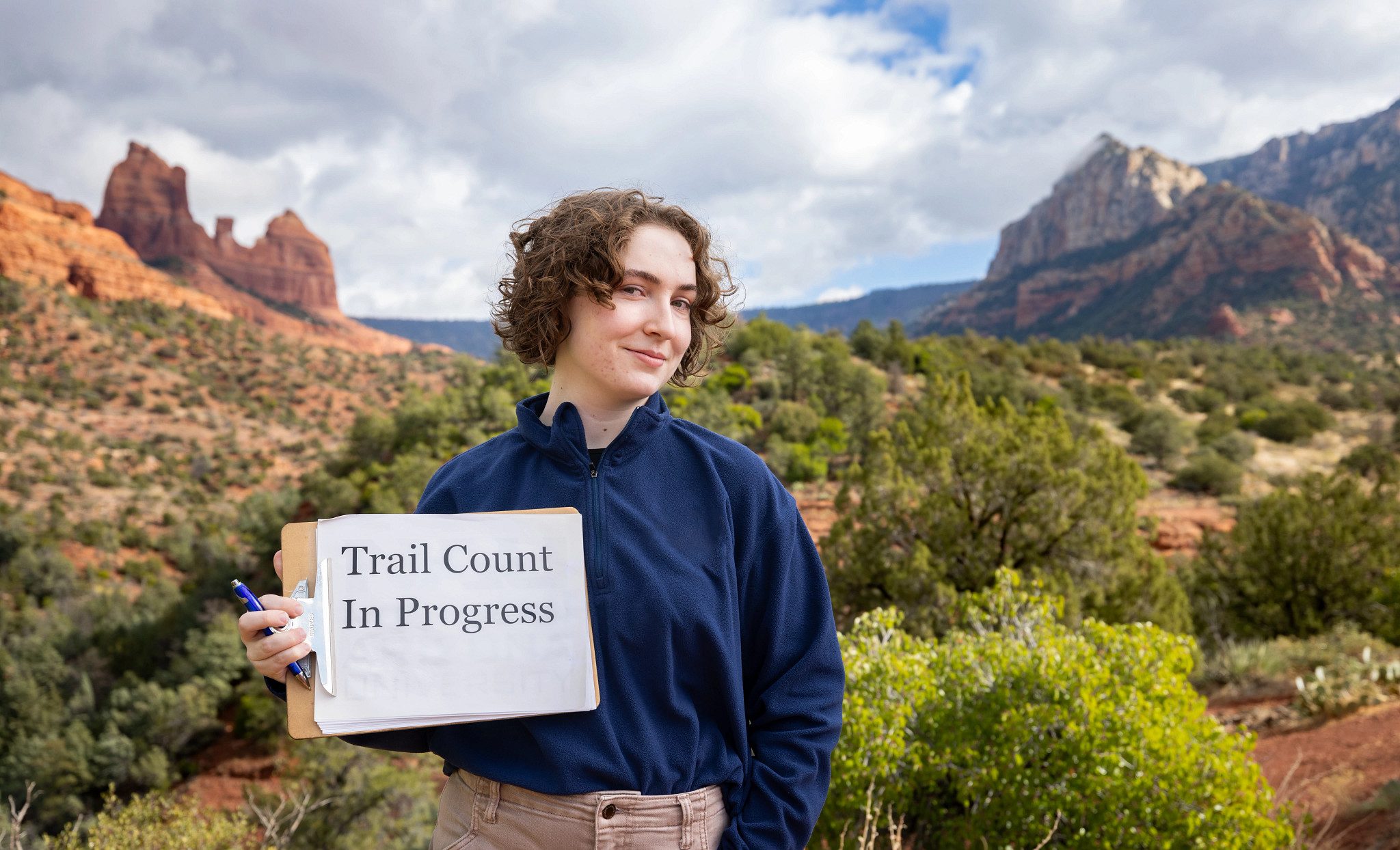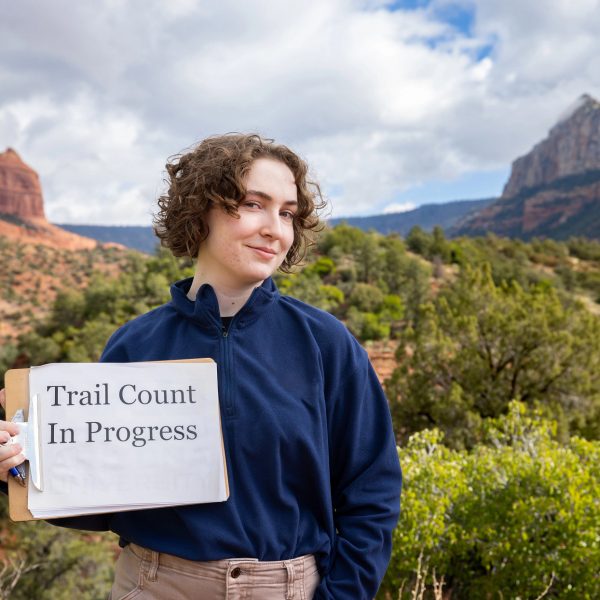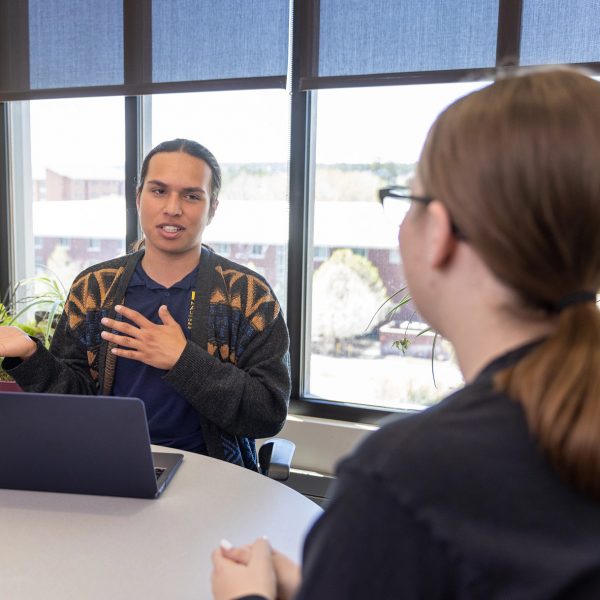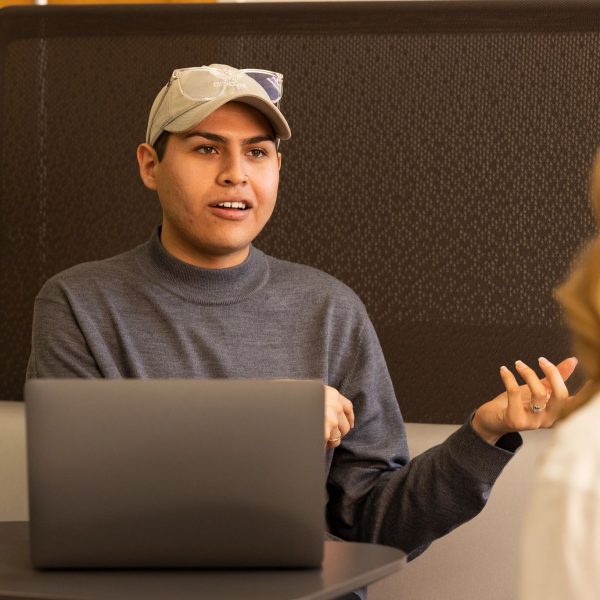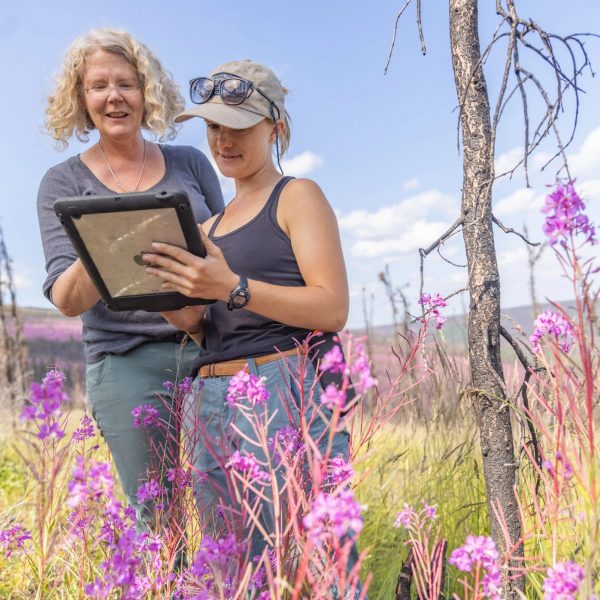Geography, Environment, and Society major Helena Moomjian’s study highlights the tremendous pressures put on hiking trails in Sedona.
Every weekend last semester, Moomjian stationed herself among Sedona’s towering red rock formations, counting heads, noting times, and compiling data that could shape the future of one of Arizona’s most beloved landscapes. The Geography, Environment, and Society major’s academic journey had its trailhead on YouTube.
“I never really knew what I wanted to do in college,” the sophomore recalls. Inspiration eventually struck—not in the classroom, but through the glow of her computer screen watching Geography King, one of her favorite YouTube channels. “You could tell he really liked his subject,” she says of the channel’s creator, identified only as Kyle. “He made a video about careers you can do with a geography degree and I thought, ‘This is it. This is what I want to do.’”
With NAU’s support through a full scholarship, Moomjian found her academic calling. She will graduate debt-free and well-positioned for graduate school opportunities.
It was almost by fate that Moomjian came across the project that would come to define her undergraduate research experience. One day, she was snowed in with nothing to do. “I was on Handshake, searching because I was really bored,” she says. Handshake led her to the Interns-to-Scholars (I2S) program and a research assistantship with School of Forestry graduate student Hayden Jorde.
At Jorde’s direction, Moomjian stationed herself at different trailheads in Sedona every weekend last semester. For eight hours a day, she tallied the number of people passing by, noting details including the size of groups and the pets accompanying hikers. This wasn’t just about numbers; it was about connecting with the pulse of Sedona’s beloved trails and understanding the pressures they face.
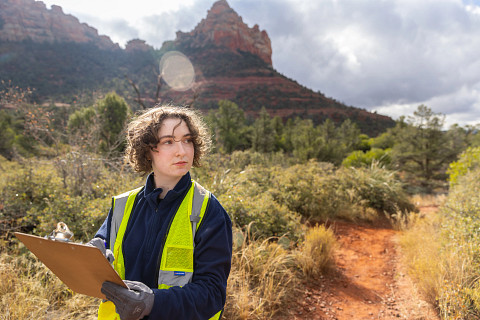
“People were always curious about what I was doing,” Moomjian says, recounting the importance of her Trail Count in Progress sign. She found herself educating hikers about the university’s role in assessing trail use—information critical for obtaining federal funding and resources for land management.
The study’s findings are striking: an estimated 2.2 million trail users annually, up from 1.7 million in the last study conducted in 2015. The numbers tell a story of a landscape under immense stress. More people, Moomjian explains, means more soil erosion, vegetation damage, wildlife displacement, and increased fire risks. Additional funding would allow investment in preventative measures to limit these impacts moving forward.
Moomjian is translating that story into an academic paper on track for publication under the guidance of Assistant Professor Catrin Edgeley from the School of Forestry. “She and I work super closely together and I have literally not enough time to say how much I love working with her,” Moomjian says.
For the upcoming Undergraduate Symposium, Moomjian is preparing a poster that encapsulates her project—a testament to her role in addressing pressing environmental and societal challenges. Her research has implications not only for Sedona’s trails, but also for the allocation of much-needed federal funds to the US Forest Service’s Red Rock Ranger District.
Reflecting on the I2S program at NAU, Moomjian champions the experience, highlighting the flexibility, funding opportunities, and invaluable mentorship. “There’s a lot of resources you get with being in I2S. You can apply for grants where you can create your own research project and pay yourself, and the connections you make are tremendous.”
Looking ahead, Moomjian envisions a career that employs scholarly research to solve real-world problems within the realm of geography or forestry. Her work exemplifies the unique cross-disciplinary opportunities that NAU fosters, and her story is a powerful reminder of how research can solve problems and ignite unforeseen passions.

